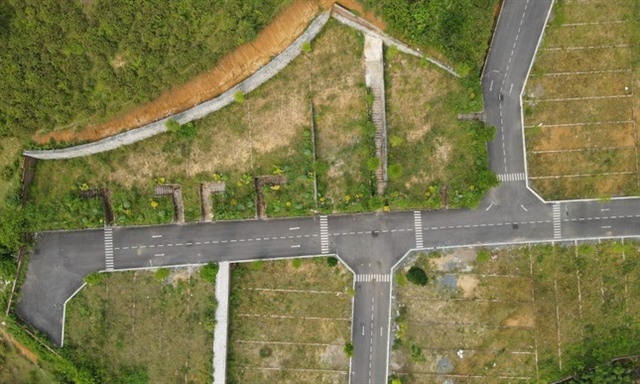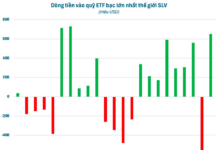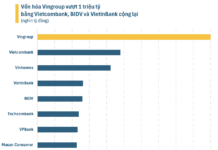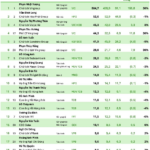Subdivision and land division with a minimum area of 50m2 in many places
Closely following Article 220 of the 2024 Land Law, which stipulates regulations on land division and consolidation, the Hanoi People’s Committee is seeking feedback to finalize the draft regulations on conditions for land division and consolidation, as well as the minimum area and dimensions for each type of land in Hanoi.
The draft aims to concretize the provisions of the 2024 Land Law, establishing a comprehensive and synchronized legal framework for effective land management and utilization while ensuring national security and defense in the capital.

Hanoi is seeking feedback on the draft regulations regarding conditions for land division and consolidation, and minimum dimensions. |
According to the draft, in cases where no new access roads are created, the land lot in the ward or town must have a minimum length of 4 meters, a minimum width of 4 meters adjacent to the road, and an area outside the red boundary of no less than 50m². In communal areas, the minimum area is specified as 80m² in the plains, 100m² in the midlands, and 150m² in mountainous regions.
For cases involving the creation of new access roads, the road width must be at least 3.5 meters in towns, 4 meters in plains, and 5 meters in midland and mountainous areas.
Regarding non-agricultural land, these regulations apply to land lots that are not subject to state allocation or lease for project implementation. In wards and towns, for commercial and service land, the new lot must have a minimum width of 10 meters adjacent to the road and an area of no less than 400m². For other types of non-agricultural land, the width must be at least 20 meters, and the area must be no less than 1,000m². In other communes, commercial and service land must have an area of no less than 800m², while other types of non-agricultural land must be no less than 2,000m².
Concerning the conditions for land division in agricultural land, these regulations apply to land that is not subject to allocation under Government Decree No. 64-CP (dated September 27, 1993), which involves issuing regulations on the allocation of agricultural land to households and individuals for stable long-term use for agricultural production, and falls outside the scope of land consolidation and land exchange.
Regulations on Land Division and Consolidation
Article 220 of the Land Law No. 31/2024/QH15 provides specific regulations on land division and consolidation.
1. Land division and consolidation must adhere to the following principles and conditions:
+ The land lot must be granted one of the following certificates: Land use right certificate, House and Land use right certificate, Land use right and ownership certificate of assets attached to the land, or Land use right and ownership certificate of assets attached to the land;
+ The land lot must be within the land use duration specified;
+ The land must be free from disputes, not subject to seizure for enforcement of judgments, and not subject to temporary emergency measures imposed by competent state agencies. If there is a dispute but the disputed area and boundary can be determined, the undisputed portion of the land lot may be subject to land division or consolidation;
+ Land division and consolidation must ensure access to a passageway, connection to existing public roads, and reasonable access to water supply, drainage, and other necessary utilities. When a landowner dedicates a portion of their residential land lot or a portion of their land lot with residential and other types of land for a passageway, they are exempt from changing the purpose of land use for that dedicated portion during land division or consolidation.
2. In addition to the principles and conditions specified in Clause 1 of this Article, the following conditions must be met for land division:
+ The land lots resulting from the division must meet the minimum area requirements for the type of land being used, as stipulated by the Provincial People’s Committee. If the divided land lot is smaller than the minimum allowable area, it must be consolidated with an adjacent land lot at the same time;
+ In the case of changing the purpose of use for a portion of the land lot, the division must be carried out, and the area of the land lot after division must be equal to or larger than the minimum area of the type of land after the change of purpose. For land lots with residential and other types of land, it is not mandatory to carry out land division when changing the purpose of use for a portion of the land lot, unless the landowner requests it;
+ In the case of dividing land ownership according to a court judgment or decision, if the division does not meet the conditions, area, and dimensions specified in the regulations, the land division shall not be executed.
3. In addition to the principles and conditions specified in Clause 1 of this Article, the following conditions must be met for land consolidation:
+ The consolidation of land lots must ensure the same land use purpose, land use duration, and land rent payment method, except in the case of consolidating a portion or all of a land lot with residential and other types of land within the same land lot, or consolidating a land lot with residential and other types of land;
+ In the event of consolidating land lots with different land use purposes, land use durations, or land rent payment methods, the procedures for changing the land use purpose, adjusting the land use duration, or changing the land rent payment method must be carried out simultaneously to unify them according to the regulations.
4. Based on the provisions of Clauses 1, 2, and 3 of this Article, other relevant legal provisions, and local customs, the Provincial People’s Committee shall specify the detailed conditions, minimum area, and dimensions for land division and consolidation for each type of land.
Ninh Phan
Hanoi’s Update on the Delayed 1.000 billion VND Hospital Project
To address the challenges faced by investors, the Hanoi People’s Committee has instructed the Long Bien People’s Committee and the Department of Natural Resources and Environment to resolve any obstacles that arise during the implementation of the Thang Long 1,000-Year Oncology and Plastic Surgery Hospital project.













































